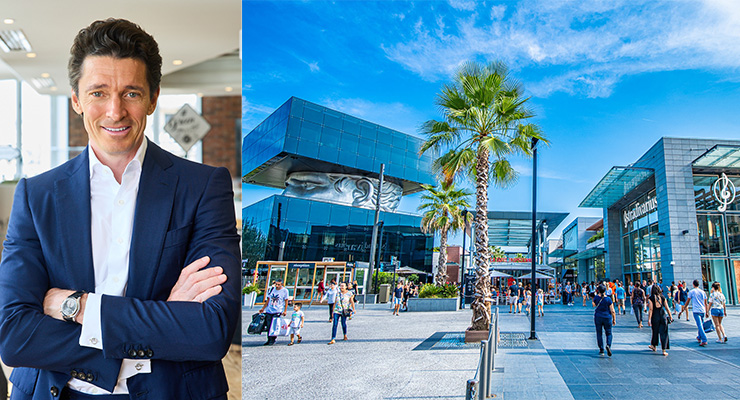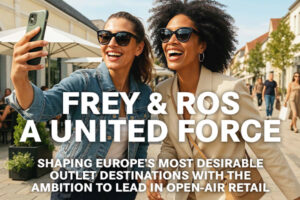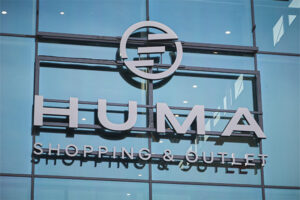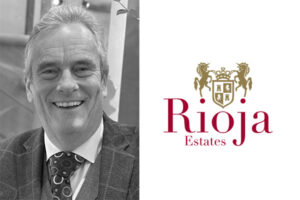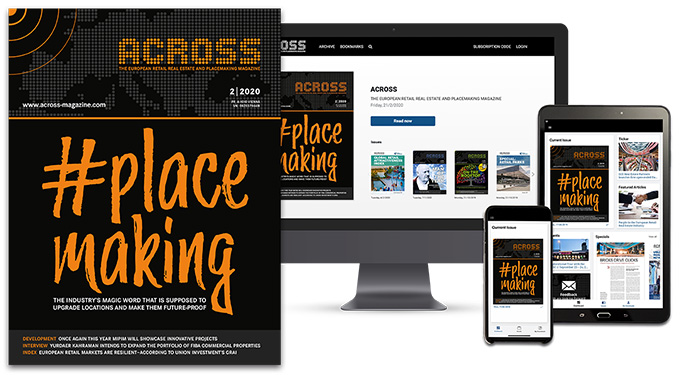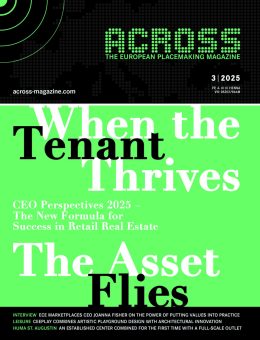ACROSS: MR. FREY, LET’S START WITH YOUR BACKGROUND. WHAT LED YOU INTO RETAIL REAL ESTATE?
ANTOINE FREY: I have always had the drive to build something of my own. When I was just 21, alongside my studies, I launched my first company: a local newspaper in Strasbourg. That small project quickly grew into three newspapers, and with the money earned, I bought into restaurants before eventually moving into retail. I co-founded a chain of sports goods stores that expanded to around 30 locations across France.
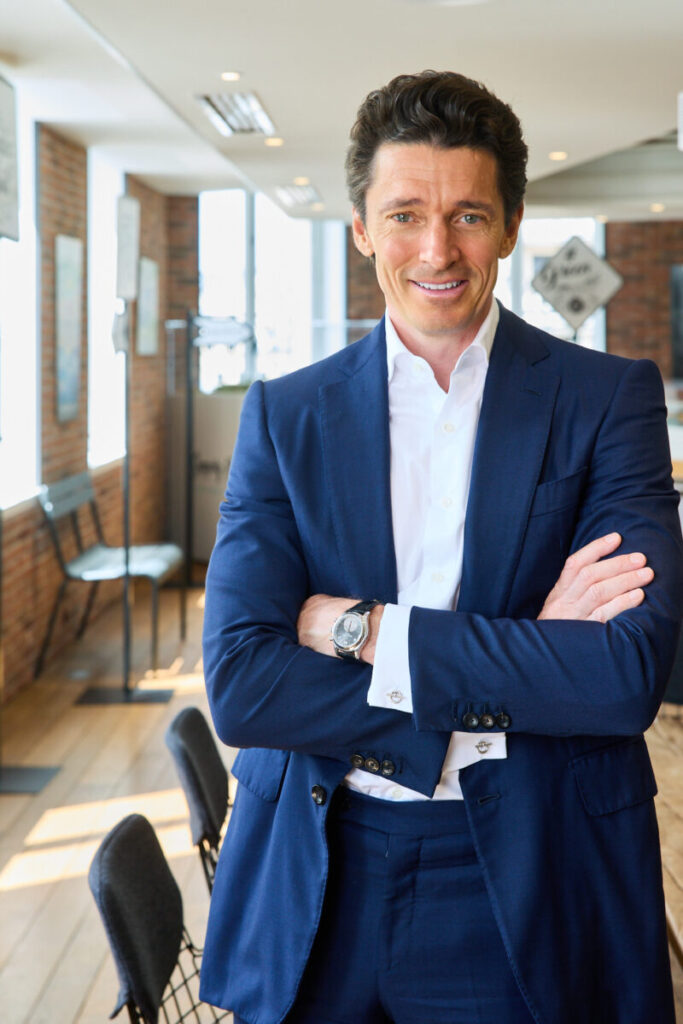
ANTOINE FREY
Antoine Frey is Chairman & CEO of FREY Group, a French real estate company specializing in open-air retail destinations. An entrepreneur since the age of 21, he has built FREY into one of Europe’s most innovative retail operators, combining development expertise with a strong commitment to sustainability and cultural placemaking.
ACROSS: WHAT DID YOU LEARN FROM “RETAIL”?
FREY: Being a retailer and working with retail parks taught me valuable lessons. On the one hand, retail parks offered clear advantages: accessibility, free parking, efficiency, and a lean economic model with low operating costs. On the other hand, they provided almost no experience; they were little more than warehouses where people came in, bought goods, and left. That struck me as a missed opportunity. I believed retail could combine the practicality of retail parks with the atmosphere and enjoyment of shopping centers. This conviction led to the creation of the shopping promenade concept: open-air destinations designed to be convenient, affordable, but also pleasurable and inspiring. Over time, that model attracted not just traditional discount retailers, but also major brands such as Inditex, proving that open-air retail could successfully bridge worlds that previously seemed separate.
ACROSS: FREY RECENTLY ACQUIRED ROS AND ENTERED THE OUTLET MARKET. WHY WAS THIS STRATEGIC MOVE IMPORTANT?
FREY: Outlets were the natural extension of our shopping promenades. While both formats are open-air and resilient, they serve different customer expectations. Promenades cater to everyday needs and services in a lively, community- focused setting, whereas outlets concentrate on fashion, leisure, and value. In the U.S., we’ve seen the success of hybrid models that combine both sides, and many brands, such as Nike or Haribo, for example, already operate in both channels.
For FREY, entering the outlet market wasn’t just diversification; it was a way to create long-term synergies and strengthen our position with a second, complementary growth driver. Outlets also perform strongly in challenging economic times, making the move both strategic and timely.
ACROSS: HOW DO SHOPPING PROMENADES AND OUTLETS COMPLEMENT EACH OTHER IN YOUR OVERALL STRATEGY?
FREY: They are two sides of the same philosophy: open-air, experience-driven, and sustainable retail. Promenades focus on daily shopping and services, outlets on fashion and leisure bargains. Together, they allow us to address a broad spectrum of consumer needs while staying true to our DNA. Looking ahead, we see increasing crossover potential. Some brands are already present in both channels, and hybrid formats are likely to grow. Having both in our portfolio means we can offer retailers a broader platform, share expertise across formats, and create synergies in leasing and development. This combination makes FREY stronger, more innovative, and more resilient to market cycles.
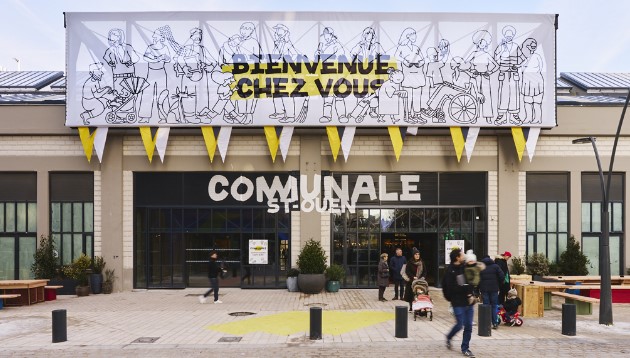
Communale of Saint-Ouen is an ambitious urban regeneration project that transforms a former industrial site into a vibrant mixed-use community. Featuring local cuisine kiosks, markets, and eco-friendly design elements, Communale promotes sustainability and collaboration. Its open, pedestrian-friendly environment supports local artisans and fosters creativity, making it a thriving social hub for residents and visitors alike. The project was also a finalist in the 2024 MAPIC Awards.
Credit: FREY
ACROSS: FREY OFTEN SPEAKS ABOUT CULTURAL PLACEMAKING. WHAT DOES THIS MEAN IN PRACTICE?
FREY: For me, placemaking means understanding that a shopping destination is never just about shopping. Our centers attract millions of visitors every year, and that gives us a responsibility and an opportunity to enrich people’s lives beyond retail. Cultural placemaking is our way of embedding art, culture, and community into the very DNA of our sites.
Take street art, for example. Many people never step into a museum or gallery because they feel it’s not for them. By placing murals, sculptures, and artistic interventions directly in our promenades and outlets, we make art accessible to everyone. It’s part of daily life. In our Shopping Promenades, we even organize conferences on philosophy or host local cultural clubs.
We want our visitors to leave not only with a purchase, but also with a sense that they’ve enjoyed something meaningful, stimulating, even inspiring. In short, we want our assets to become real destinations, serving as both cultural and social gathering places as well as commercial ones.
ACROSS: MALMÖ DESIGNER VILLAGE – THE FIRST SIGNIFICANT JOINT PROJECT BY ROS AND FREY – IS ALSO SEEN AS A FLAGSHIP ESG PROJECT FOR FREY. WHY IS THAT?
FREY: Malmö is hugely symbolic for us. It’s the first true designer village in the Nordic countries, a region that until now had no reference point for this kind of project. That means we’re setting the standard from scratch. Sustainability was at the heart of our approach from day one. For instance, the entire project will use geothermal energy for heating and cooling, an unusual but essential investment for such an asset. We’ve focused on local sourcing of materials to reduce our carbon footprint. Even the most minor details matter: doors are designed to be welcoming while minimizing unnecessary energy waste.
But ESG isn’t only technical. It’s also about social and cultural responsibility. In Malmö, we are working closely with Scandinavian brands, many of which are entering outlet retail for the first time. We spend time with them, explaining how designer villages can enhance rather than dilute their brand image. It’s a process of education and trust-building. By doing so, we’re not only building a destination. We’re also helping to shape the evolution of the Nordic retail market. That’s why Malmö is such a flagship: it embodies sustainability, innovation, and cultural placemaking all at once.
The Rivery project is a prime example of FREY’s open-air shopping center strategy. Designed to combine accessibility, sustainability, and customer experience, it embodies the group’s vision of creating vibrant, community oriented retail destinations.
Credit: FREY
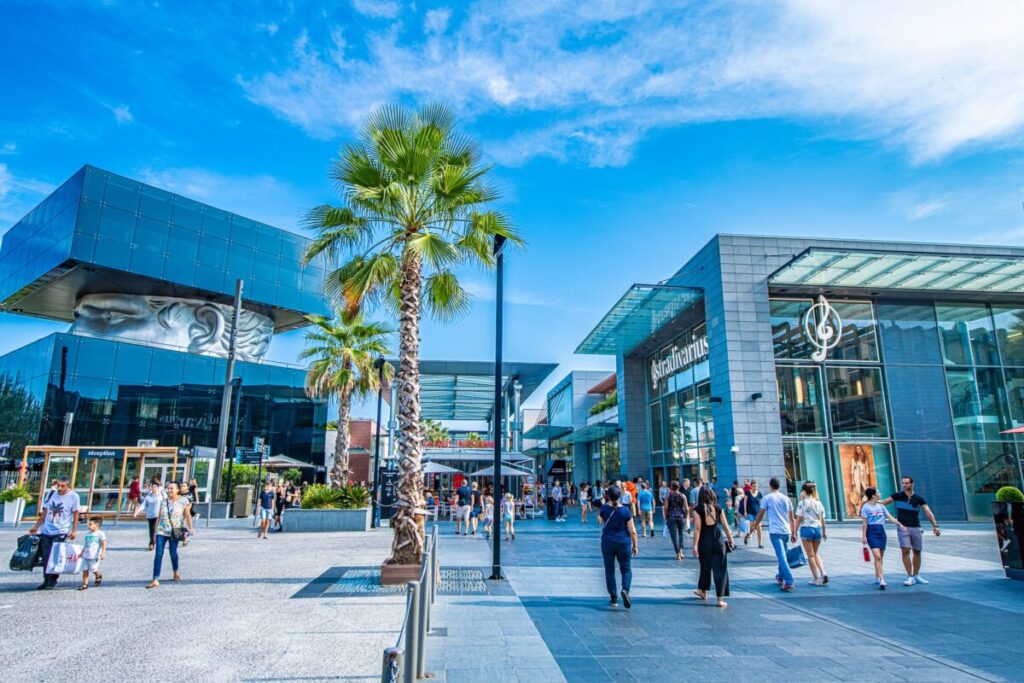
ACROSS: FREY HAS BUILT, IN GENERAL, A STRONG REPUTATION AROUND SUSTAINABILITY AND LONG-TERM VISION. HOW DO YOU TRANSLATE THESE VALUES INTO PRACTICE?
FREY: Sustainability is not an add-on for us; it is central to our identity. We are B Corp certified, one of the few European real estate groups to achieve this, and our recertification score was exceptionally high. That’s not just a badge; it reflects profound changes in how we build and operate.
We look at carbon footprint across the lifecycle: from construction materials to heating and cooling systems. We design for efficiency, invest in renewable energy, and consider every operational detail, as I explained for Malmö, where even door systems were designed to minimize energy waste. At the same time, we take responsibility for the social and cultural impact of our assets, making them places where people are proud to visit.
Being long-term investors gives us the freedom to make these choices. Unlike a short-term fund, we don’t think in three- or five-year horizons. Our investors are evergreen, and we build with decades in mind. That’s why we’re willing to invest heavily upfront in sustainability – because we know we’ll be operating these assets long into the future.
ACROSS: YOUR FIRST JOINT ACQUISITION WAS DESIGNER OUTLET BERLIN. WHAT OPPORTUNITIES DO YOU SEE THERE?
FREY: Berlin is one of Europe’s most dynamic capitals, and Designer Outlet Berlin is already a strong performer. But no asset is ever “finished.” We immediately identified areas to strengthen. First, some essential brands, such as Nike and Puma, are missing. They are “must-haves” for any leading outlet, so we will work hard to bring them on board. Second, food & beverage is underdeveloped. We want dining to be an experience, not an afterthought, because F&B can extend dwell time and enrich the visit.
Another priority is enhancing the overall customer journey: making it more engaging, more fun, less “dry.” For Berlin in particular, we plan to introduce street art as part of the identity of the center – after all, Berlin is one of the world’s street art capitals. We deeply respect the work McArthur- Glen did here, but our role now is to bring new energy and push the asset to the next level. It’s about evolution, not revolution.
ACROSS: FREY ALSO MADE A SIGNIFICANT ACQUISITION MOVE IN ITALY. WHY WAS ITALY SO STRATEGIC?
FREY: Italy is one of Europe’s two powerhouse outlet markets, along with the UK. To be credible as a leading European operator, we had to establish a strong presence there. The Land of Fashion platform was a perfect opportunity: five large, well-located centers, two of which rank among Europe’s top 60 outlets.
These assets are already substantial, but we see clear opportunities for improvement. We plan to refresh the tenant mix, introduce new categories beyond fashion, and add more experiential elements. It’s a big integration challenge, five centers joining our network at once. However, it also provides us with immediate critical mass in a key market. This acquisition was as much about scale and positioning as it was about individual assets. With Italy on board, FREY has secured its place at the very heart of the European outlet map.
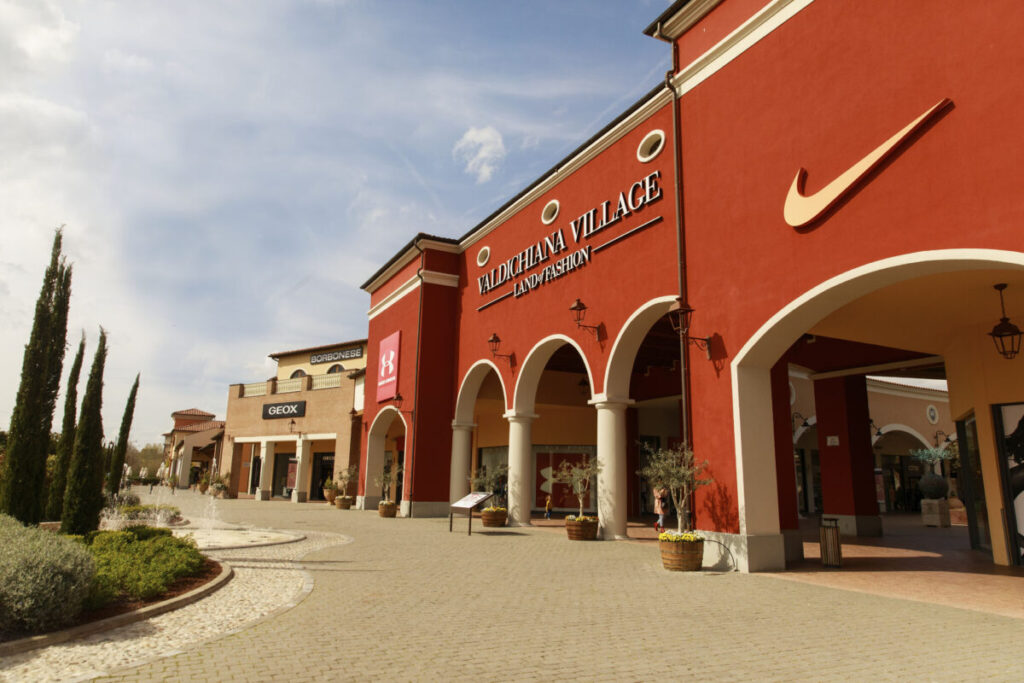
ACROSS: FREY HAS BEEN VERY ACTIVE IN ACQUISITIONS AT A TIME WHEN MANY PLAYERS ARE CAUTIOUS. WHY PURSUE SUCH AN ANTICYCLICAL STRATEGY?
FREY: It’s about timing. When everyone is buying, prices are inflated. When uncertainty reigns, opportunities appear. Interest rates are still high, financing is more complex, and many investors are sitting on the sidelines. That creates windows for those willing to act. Some see that as risky; I see it as common sense. We are careful, selective, and opportunistic. We won’t buy at any price. But right now, we see exceptional opportunities to acquire high-quality assets at valuations that will not be available once the market fully rebounds.
In short, being bold today is the best way to secure value for tomorrow.
ACROSS: FINALLY, WHAT IS FREY’S MISSION FOR THE FUTURE?
FREY: Our mission is clear: to become the number one operator of open-air retail destinations in Europe. That includes shopping promenades, outlets, and the innovative hybrids that may come in between. It includes cultural placemaking, sustainability, and community engagement. It includes growth through both development and acquisition. And above all, it encompasses a long-term vision, supported by a dedicated team of over 300 people who share this ambition.
Of course, some in the industry may doubt such ambition. That’s natural. However, our track record demonstrates that we possess the creativity, resilience, and determination to achieve it. We are building not just retail destinations, but places where people want to spend time, shop, and connect. That is the future of retail real estate, and that is FREY’s mission.

